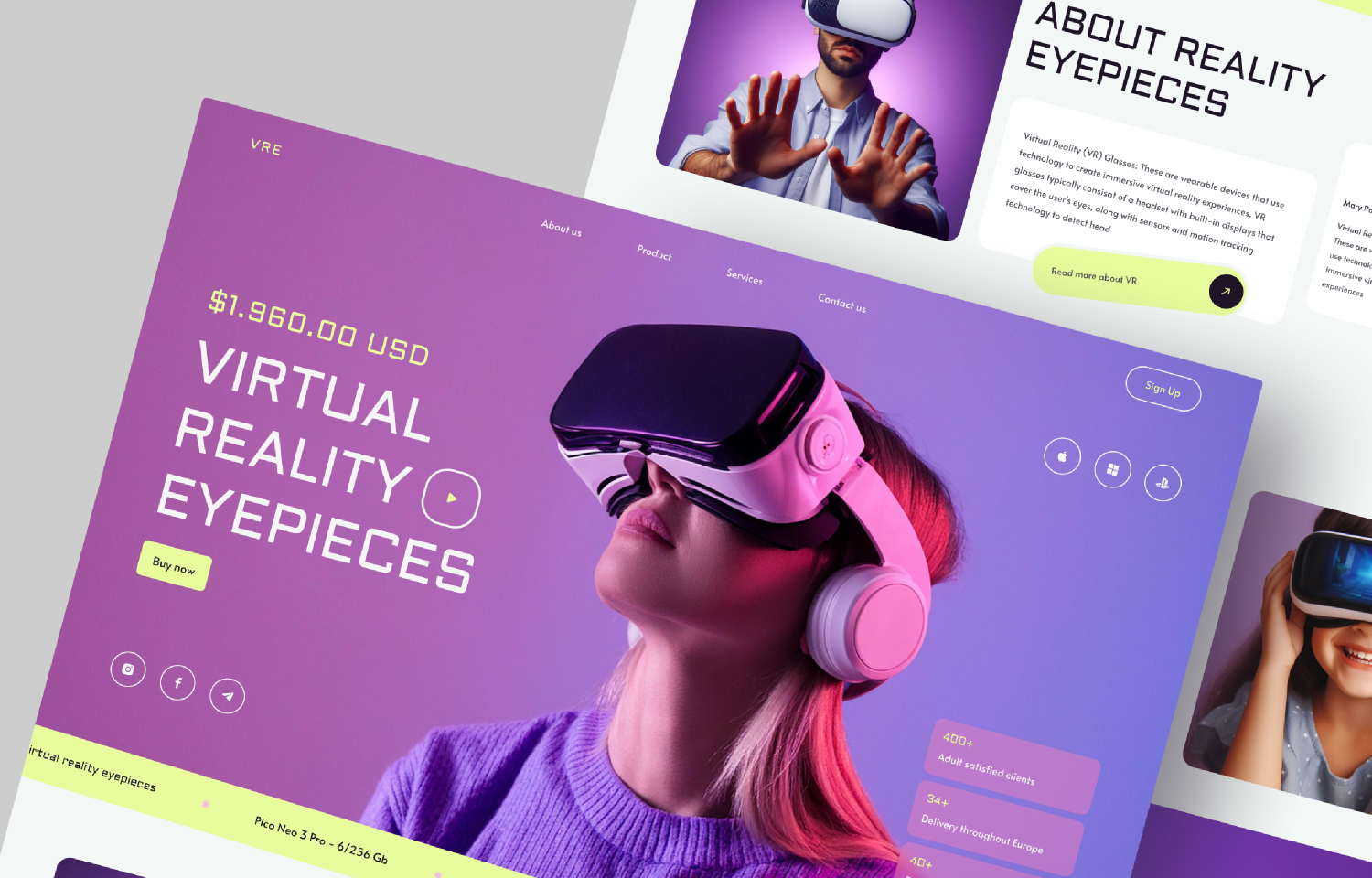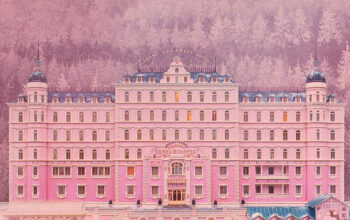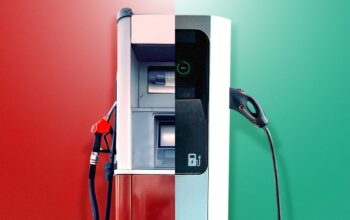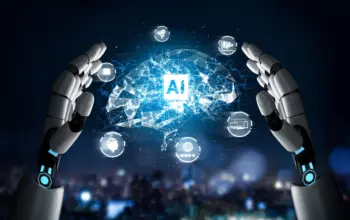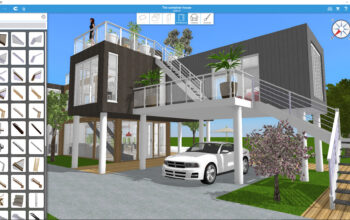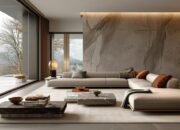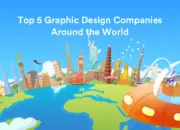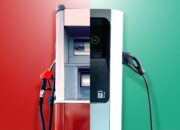What is Virtual Reality (VR)?
Virtual Reality (VR) is an innovative technology that creates a digital world that feels real, allowing users to experience immersive environments as if they were physically present.
The Importance of VR Design
Effective VR design is not only about creating stunning visuals but also making interactions natural and intuitive. In this article, we’ll explore why good VR design is crucial to creating amazing and engaging VR experiences.
Big Opportunities in VR Design
- Immersive Experiences That Wow Users
VR offers deeply immersive and realistic experiences that transport users to virtual worlds. The power of VR design lies in how it can make these experiences feel lifelike and interactive, providing a unique way of engaging with content.
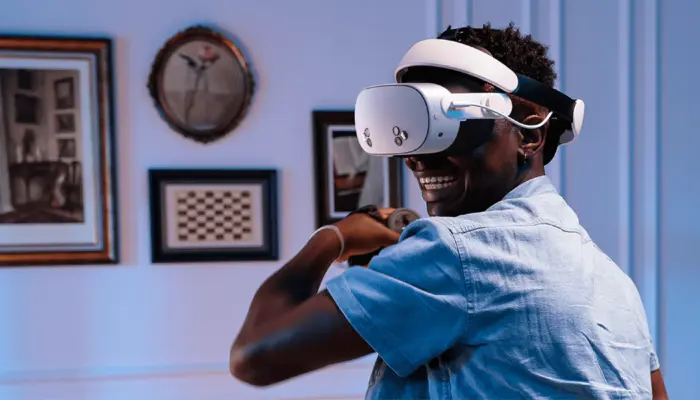
- VR Applications Across Different Industries
- Entertainment: VR is revolutionizing the gaming, movie, and entertainment industries by offering immersive, interactive experiences that change how we play and watch.
- Education: With VR applications, learning becomes more engaging and realistic through simulations, such as virtual science labs or medical training.
- Healthcare: VR is being used for physical and psychological therapy, as well as medical training, offering a safe and controlled environment for practice.
- Architecture and Interior Design: VR allows designers to showcase realistic space simulations, helping clients visualize designs before any construction starts.
- More Natural User Interactions
VR design enables more intuitive and natural interactions, letting users interact with virtual objects and environments in a way that feels real.
Challenges in Creating Engaging VR Experiences
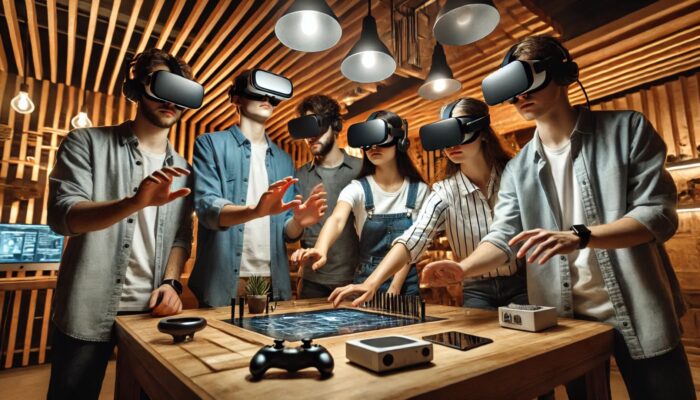
- Tech and Hardware Limitations
The hardware required for VR, like headsets and sensors, poses challenges in creating seamless and comfortable VR experiences. Good VR design should balance performance and comfort without sacrificing visual quality.
- Space and Movement Constraints
Users are limited by physical space when using VR. Designers need to create VR experiences that allow for free movement without compromising user comfort. - Motion Sickness in VR
One of the biggest challenges in VR design is preventing motion sickness. It’s essential to create smooth, well-designed VR experiences that reduce discomfort, such as optimizing frame rates or limiting movement areas.
- Natural User Interactions
The controls and interfaces in VR should be easy to use and intuitive. Clear and simple navigation ensures users aren’t confused and can fully enjoy their VR experience. - Visual Quality and Rendering in VR
Good VR design requires high-quality visuals and smooth rendering. Poor visual performance can ruin the user experience and make VR less enjoyable.
Design Principles for Creating Interactive and Immersive VR Experiences
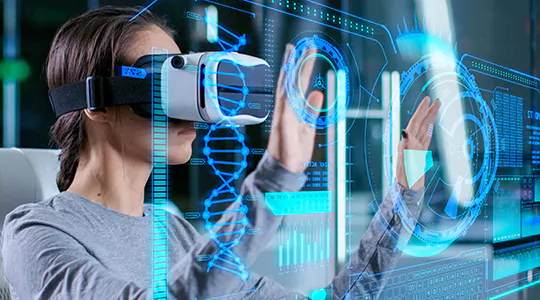
- Creating Immersive VR Designs
Effective VR design combines visuals, sound, and interaction to create a fully immersive experience. Every element should work together to draw users into the virtual world. - Easy Navigation for Better Experience
VR interfaces should be simple to navigate. Users should feel comfortable moving and interacting in virtual spaces without feeling lost or frustrated.
- User-Centered VR Design
The best VR designs focus on the user’s needs, ensuring comfort, safety, and satisfaction. The experience should always be centered around what’s best for the user. - Flexible and Customizable Designs
A good VR experience allows users to personalize their environment, such as adjusting space or controls, so each person can enjoy the experience in their own way.
Successful Examples of VR Applications and Design
- Popular VR Games That Changed the Entertainment Industry
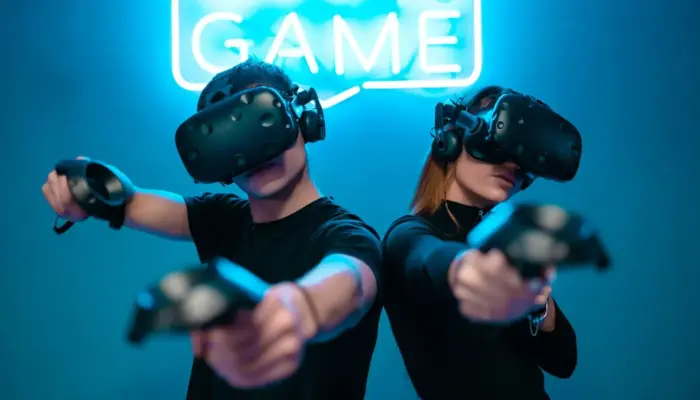
VR games like “Beat Saber” and “Half-Life: Alyx” are examples of successful VR design that offer interactive, immersive experiences, blending gameplay with stunning virtual environments.
- VR Applications in Education and Training
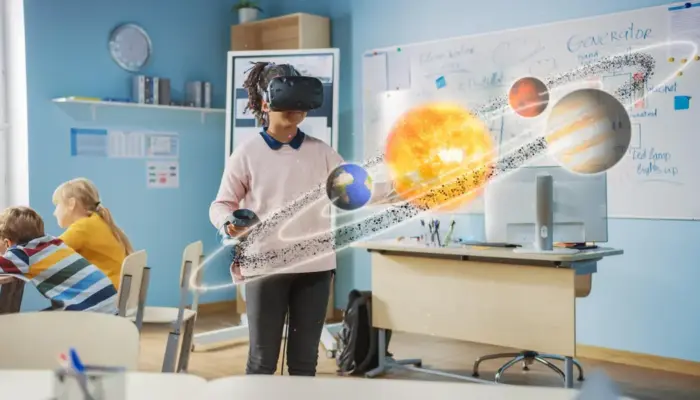
VR-based applications like “The Body VR” allow users to learn through realistic simulations, offering an interactive way to explore subjects like science and history.
- VR Design in Architecture and Planning
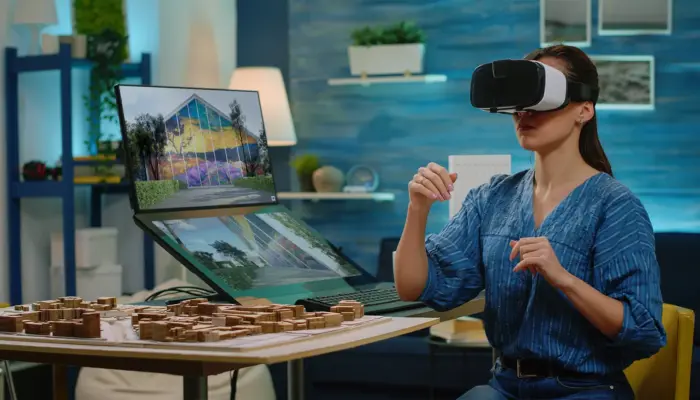
In architecture, VR helps designers create simulations that allow clients to explore virtual spaces before construction begins, giving a clearer understanding of the final result.
The Future of VR Design: What’s Next?
- Integration with Other Technologies like AR and AI
In the future, VR will merge with other technologies like Augmented Reality (AR) and Artificial Intelligence (AI), creating even more advanced and personalized VR experiences. - Advancements in VR Hardware
VR hardware will continue to evolve, with lighter, more comfortable headsets and higher performance, offering smoother and more enjoyable experiences for users. - VR in Everyday Life
VR will become more integrated into our daily lives, not just for entertainment but for virtual shopping, socializing, and even exploring new destinations.
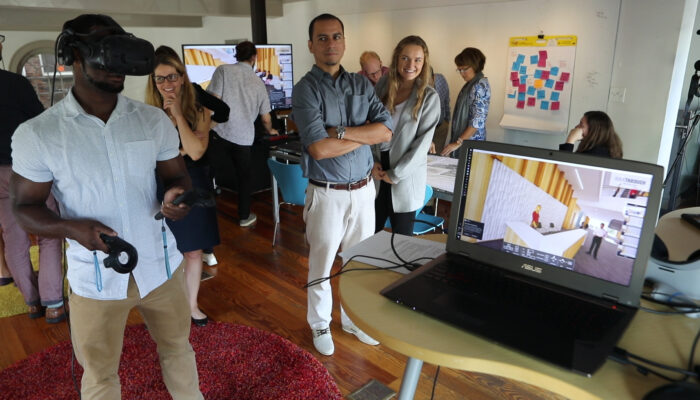
The Growing Potential of Immersive VR Design
- Embracing the Future of Immersive Experiences
As VR technology advances, the opportunities and challenges in VR design will continue to evolve. Designers must stay innovative and responsive to user needs to create amazing and interactive VR experiences.
- The Importance of Creativity in VR Design
The future of VR design holds endless possibilities, and with creativity and the right approach, designers can craft virtual reality experiences that will captivate users for years to come.

